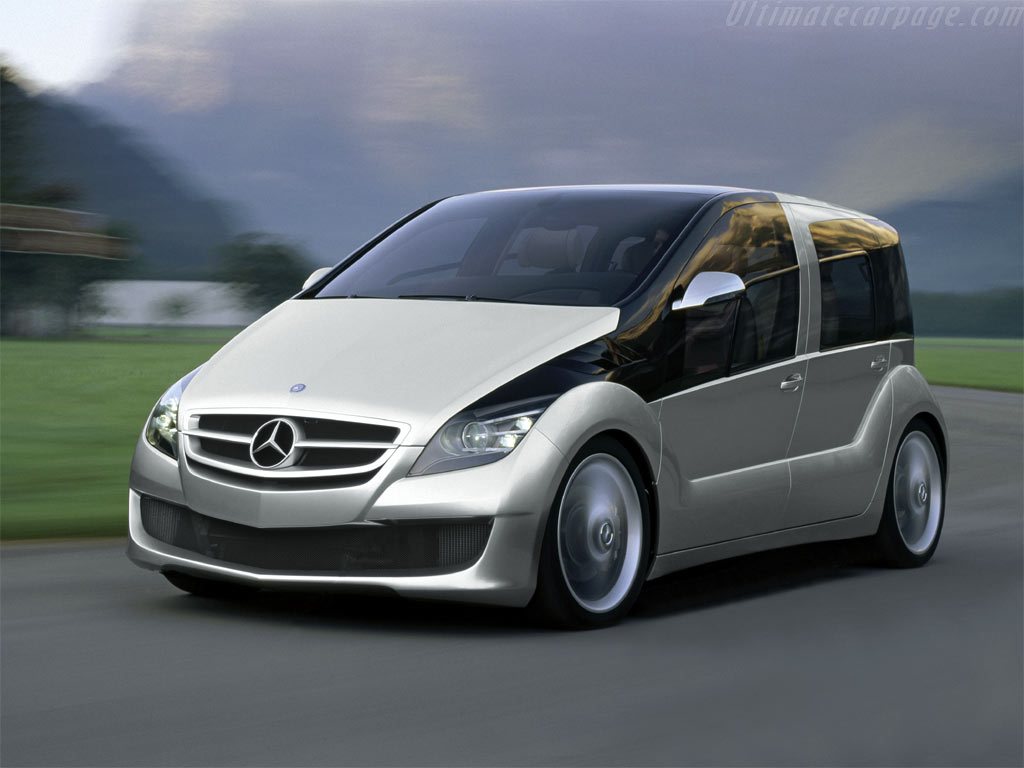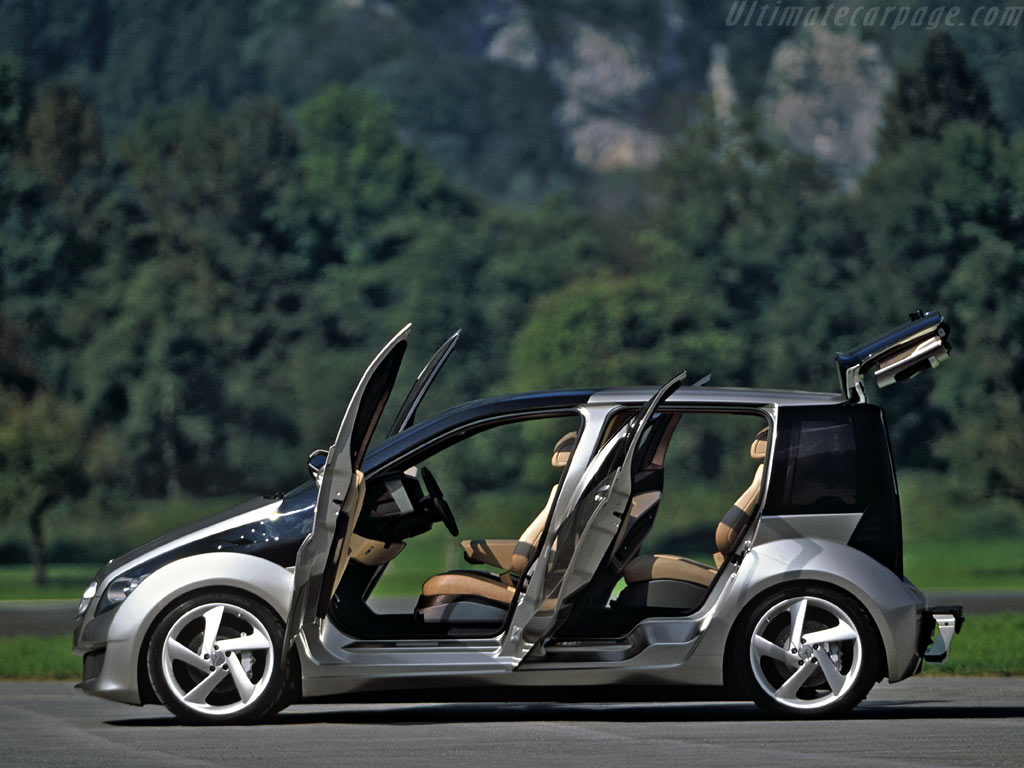Mercedes Benz F600 Hygenius Concept





The new F 600 Hygenius is the latest in the series of research vehicles from Mercedes-Benz that point the way forwards for the future. Powered by a zero-emission fuel cell drive with an output of 115 hp, the compact-class car with a family-friendly design consumes the equivalent of 2.9 litres of fuel per 100 kilometres and has an operating range in excess of 400 kilometres. Fuel cells use the chemical reaction between hydrogen and oxygen to generate electrical power in a process that produces no emissions
The F 600 Hygenius achieves a maximum power output of 115 hp combined with a peak torque of 350 Newton metres. The fuel cell drive alone generates a constant power output of 82 hp and a torque of 250 Newton metres. With any surplus energy being stored in a powerful lithium-ion battery, the system acts in a similar fashion to a hybrid drive, selecting the best power source to use depending on the driving situation. When parking or manoeuvring, for instance, the electric motor draws its power from the battery alone, while both fuel cell and battery feed it with energy in unison when the vehicle is accelerating. The electric motor doubles as a generator that charges the battery during vehicle braking by recuperating drive energy.
As well as generating clean energy to drive the research vehicle, the fuel cell can also serve as a mobile power source: its 66 kW of electrical power would be quite sufficient to keep several detached houses supplied with power. Passengers aboard the F 600 Hygenius also stand to benefit from its extraordinary energy reserves: the cup holders which use electrical power from the fuel cell to keep drinks chilled or hot are just one example of this. The fuel cell's energy also allows electrical devices to be operated anywhere at the standard voltage level - following onboard conversion - granting the occupants total independence from the mains network on family outings or business trips. All they have to do is connect the device to a power socket in the tailgate.
The four-door F 600 Hygenius also makes a mark for itself when it comes to comfort and versatility. Despite the body's compact length of just 4348 millimetres, the levels of space inside are impressive, even by luxury-class standards. The distance between the front and rear seats - a useful indicator of the freedom of movement and spaciousness - measures 945 millimetres, and can be extended by up to a further 400 millimetres thanks to the sliding design of the individual rear seats. This puts the research vehicle's comfort dimensions on a par with those found in exclusive luxury saloons.
A host of ingenious design solutions make the F 600 Hygenius an ideal family car. Take the child and family-friendly design of the seats, for example: the front passenger seat and the individual seats in the rear incorporate a new technology allowing the backrest to be used either way around. The backrests can be swung forwards and reversed in such a way that ISOFIX child seats can be locked into place on the seat cushions in a rearwards-facing position. The face-to-face seating arrangement boosts safety at the same time as making it easier to attend to young children en route, with the additional fore-aft and crossways adjustment of the rear seats allowing infants to be reached easily from the nearside rear seat.
Mercedes-Benz has devised a revolutionary new seat for the driver featuring a two-piece backrest cushion that follows the upper body movements and minimises the strain on the intervertebral discs, regardless of the seat position. If, for instance, the driver tilts the seat further back, the lower section of the backrest cushioning automatically pivots forwards to support the pelvic area.
Cameras integrated into the housings of the exterior mirrors keep an eye on traffic to the side of and behind the F 600 Hygenius, even when it is parked. If another car or a bicycle is approaching from behind, the system will automatically disable the doors for a brief period to avoid the risk of a collision when they are opened. Out on the road, the video system monitors the blind spot of both exterior mirrors and warns drivers about to change lane if a vehicle is approaching from behind.
In order to allow the vast multitude of functions to be operated quickly, intuitively and, most importantly, safely, the engineers at Mercedes have devise a concept based on the proven operating principle used in the new Mercedes-Benz S Class. This concept helps to minimise driver distraction, which in turn benefits driving safety. As in the Mercedes flagship model, buttons in a control panel in the middle of the dashboard serve to operate the most commonly used systems, such as the radio, air conditioning, car phone and navigation. These buttons can be easily reached by both the driver and the front passenger.
The push/turn control knob in the centre of the control panel can automatically detect whether it is being operated by the driver or the front passenger, enabling both to program their personal climate control settings. This intelligent user recognition facility is based on the electrical signals transmitted in the skin: the instant the front passenger touches the push/turn control knob in the centre, a data circuit closes between the control knob and a sensor mat in the seat cushion, switching the display to the settings for the front passenger side.
The images on both high-resolution colour displays in the dashboard are diverted by means of two mirrors before being projected to appear at a point 1.40 metres in front of the driver. This leading-edge virtual display technology from Mercedes-Benz represents a key improvement to driver-fitness safety as it shortens the time required for drivers to switch their gaze from what's taking place on the road far ahead to the close-up instrument cluster display. Scientific studies have confirmed that, with this technology, the driver's eyes do not have to constantly adjust between close and long range so they do not tire as quickly.
Headlamps with high-power LEDs enhance the driver's night-time vision and help to avoid accidents. The LEDs are distributed over three projector modules: the light module in the centre is activated as required, depending on the driving situation, and also assumes additional functions, such as main beam, the Active Light System and the cornering light. All of the various lighting features are performed simply by switching individual LEDs on and off electronically, thereby eliminating the need for moving components, such as those currently fitted for the Active Light System.
General specifications
Record last updated 10 / 17 / 2005
Country of origin Germany
Produced in 2005
Introduced at 2005 Tokyo Motorshow
Numbers built N/A (Prototype)
Body design N/A
Weight N/A
Drivetrain
Engine Fuel cell N/A
Engine Location N/A
Displacement N/A
Valvetrain N/A
Fuel feed N/A
Aspiration N/A
Gearbox N/A
Drive N/A
Performance figures
Power 115 bhp / 86 KW
Torque 350 Nm / 258 ft lbs
BHP/Liter N/A
Power to weight ratio N/A
Top Speed N/A
0-60 mph Acceleration N/A
 IMAGE CORNER
IMAGE CORNER Wallpapers/Cool Images
Wallpapers/Cool Images Car Pictures
Car Pictures Mercedes Benz F600 Hygenius Concept
Mercedes Benz F600 Hygenius Concept IMAGE CORNER
IMAGE CORNER Wallpapers/Cool Images
Wallpapers/Cool Images Car Pictures
Car Pictures Mercedes Benz F600 Hygenius Concept
Mercedes Benz F600 Hygenius Concept
